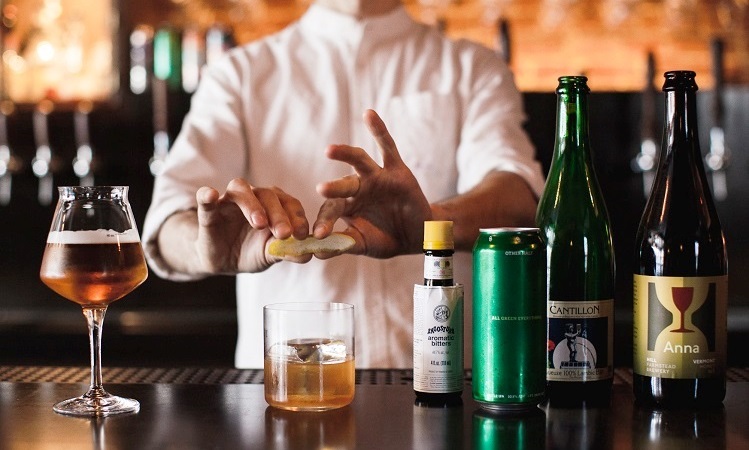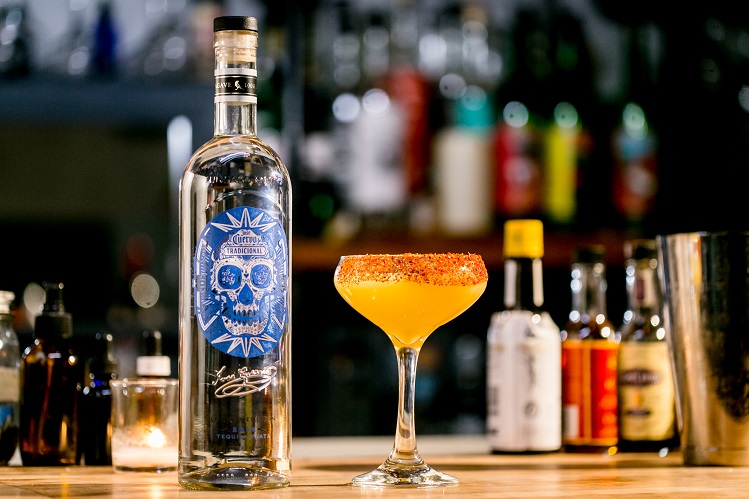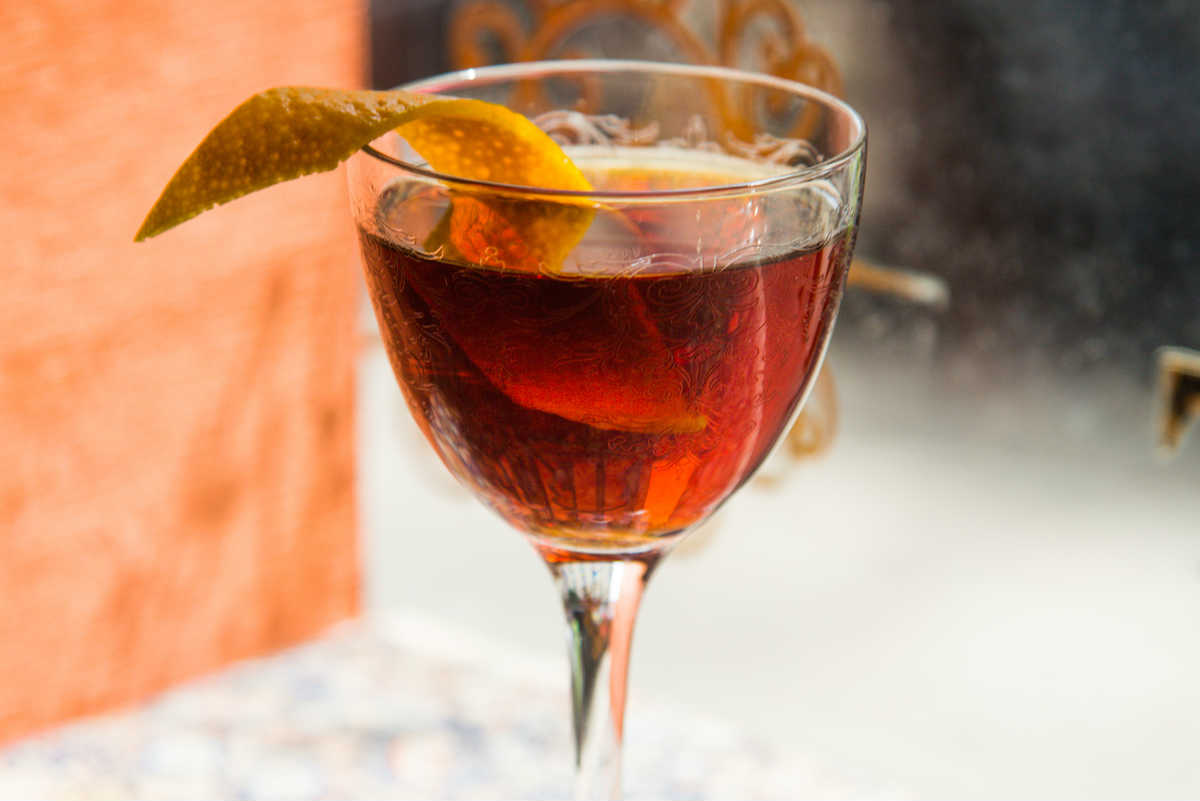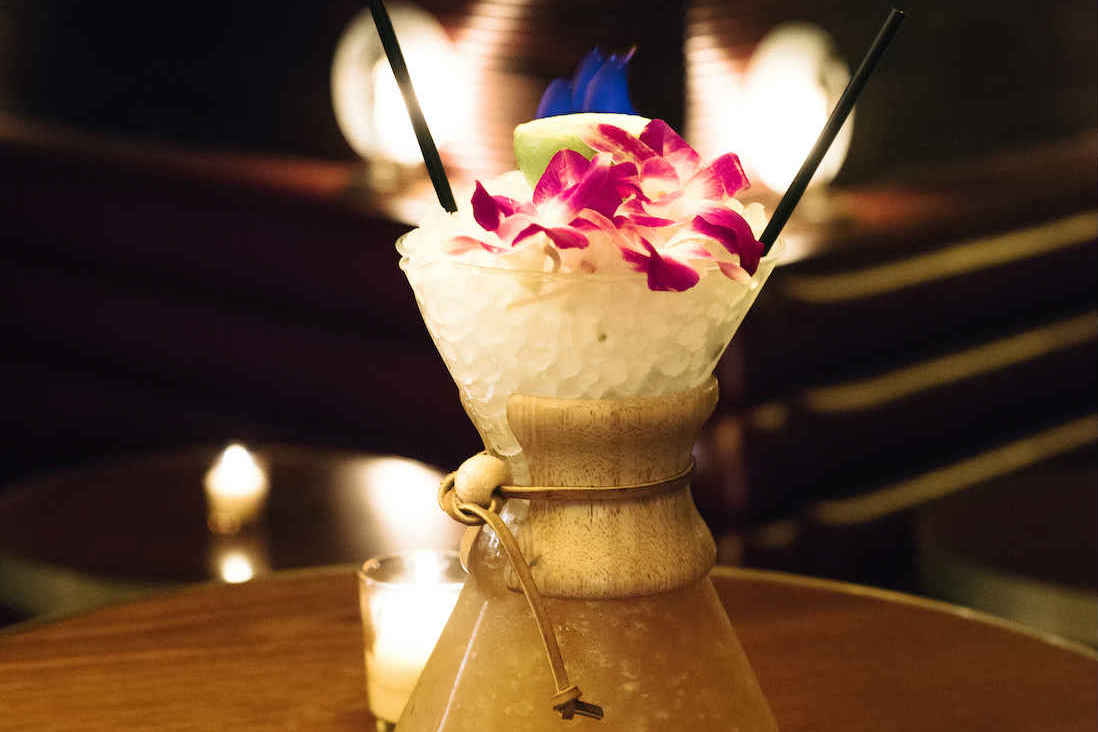This post was produced by our friends at Hop Culture, the independent voice for craft beer.
In my years as a bartender, I’ve seen plenty of regulars fall into a bar rut. There’s a certain comfort to ordering the same thing you always get, in knowing that your gin and tonic will taste more or less like every G&T that came before it. And with tap lists expanding and crafty brewers reviving obscure beer styles, the once simple task of ordering a pint can feel daunting.
We’re here to help. If you’re bored of the same old thing or tired of forking over 13 bucks for a specialty cocktail, why not look to the increasingly complex world of beer? We’ve put together this handy guide specifically for cocktail drinkers, meant to help you wade confidently into the wide ocean of craft beer.
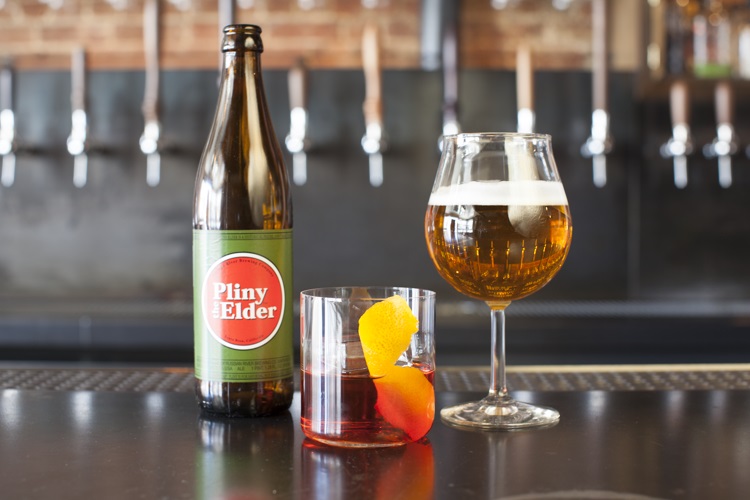
You always get: A Negroni
Next time order: A West Coast IPA
If you can’t get enough of the classic Italian aperitif, then you probably don’t shy away from bitter flavors. And no beer does bitter better than a West Coast-style IPA. Though there is no “official” definition, West Coast IPAs tend to be big and bold, with a palate-wrecking bitterness that results from generous heaps of hops. Many also boast piney and citrusy notes—flavors that will be welcome to every seasoned Negroni drinker.
Best Example: Russian River Pliny The Elder
Others to Try: Alpine Duet, Ballast Point Grapefruit Sculpin, Green Flash West Coast IPA
~

You always get: A French 75
Next time order: A saison
The classic French 75 is an effervescent beauty that bursts with gin botanicals and lemon. For a beer that mimics all that and more, reach for a saison. Often referred to as farmhouse ales, these Belgian-style beers are marked by distinctive lemon and pepper notes from the yeast. They are also highly carbonated and usually quite dry, making them a refreshing, easy-drinking substitute for a French 75.
Best Example: Brasserie Fantôme Saison
Others to Try: Brooklyn Sorachi Ace, Goose Island Sofie, Ommegang Hennepin
~
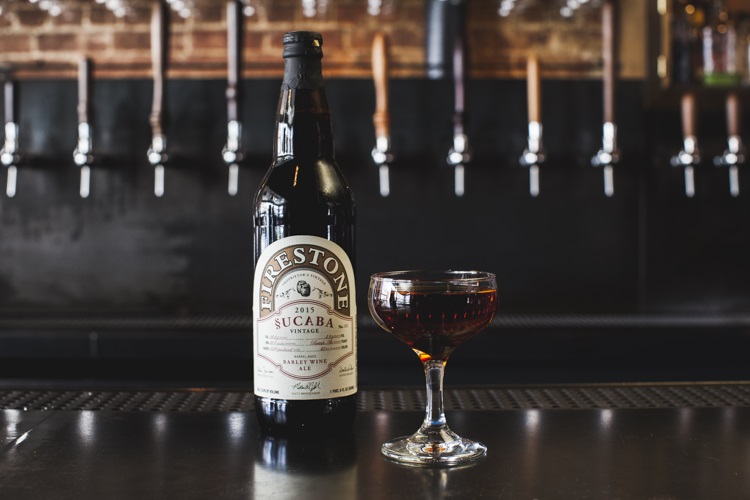
You always get: A Manhattan
Next time order: An American barleywine
A great Manhattan is all about balance: marrying the full flavor of whiskey with the sweet herbaceousness of vermouth. American barleywines have the same goal in mind. More heavily hopped than their English counterparts, American barleywines balance rich malt sweetness with hop bitterness, creating a complex beer built for sipping. And like Manhattans, barleywines are boozy (often clocking in over 10% ABV), making them a perfect cold weather drink.
Best Example: Firestone Walker §ucaba (English style)
Others to Try: Alesmith Old Numbskull, Bell’s Third Coast Ale, Victory Old Horizontal
~
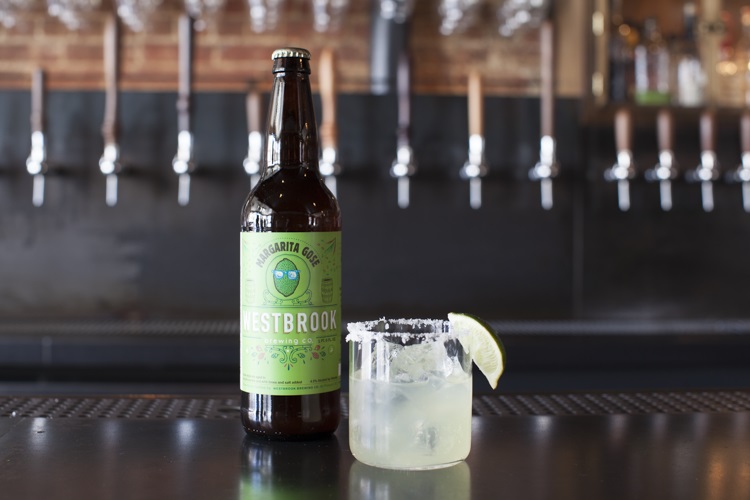
You always get: A Margarita
Next time order: A gose
The combination of acid and salt has long been appreciated in the kitchen, and cocktails like the margarita show that the marriage works just as well in your glass. And beer is no exception. Once a nearly extinct style, gose is making a comeback as brewers rediscover its salty-sour charms. Like a good margarita recipe, the German wheat beer is characterized by a tart fruitiness and a hint of salinity. Next time you want to mix up a poolside pitcher of margs, crack open a gose instead.
Best Example: Westbrook Margarita Gose
Others to Try: Off Color Troublesome, Sierra Nevada Otra Vez, Westbrook Gose
~
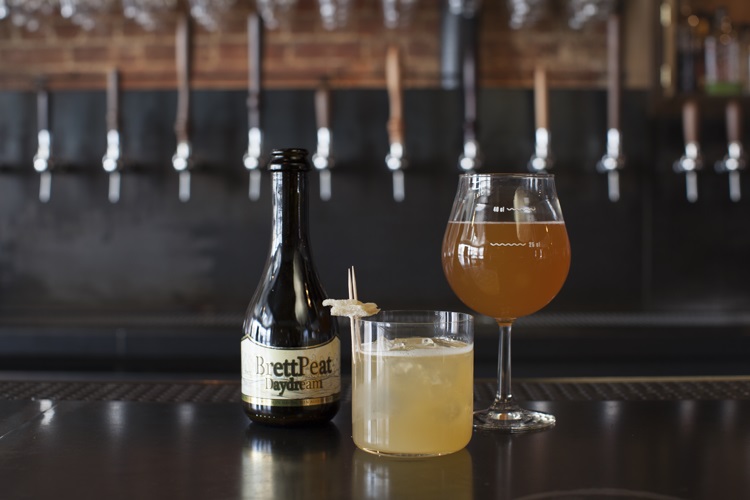
You always get: A Penicillin
Next time order: A smoked beer
The Penicillin recently entered the cocktail canon as a modern classic, and one whiff of the peaty scotch-based drink makes it easy to see why. But if you think smoke is relegated to a rocks glass, think again. In fact, smoke was largely unwanted but unavoidable throughout much of brewing history, as malts were often dried over open flames. Today, smoke is an intentional element in a number of beers, from German rauchbiers to Polish grätzers (a smoked wheat beer). In America, smoked malt most often finds its way into darker beers like stouts and porters.
Best Example: Birrificio Del Ducato Brett Peat Daydream
Others to Try: Evil Twin Ashtray Heart, Schlenkerla Rauchbier, Stone Smoked Porter
~
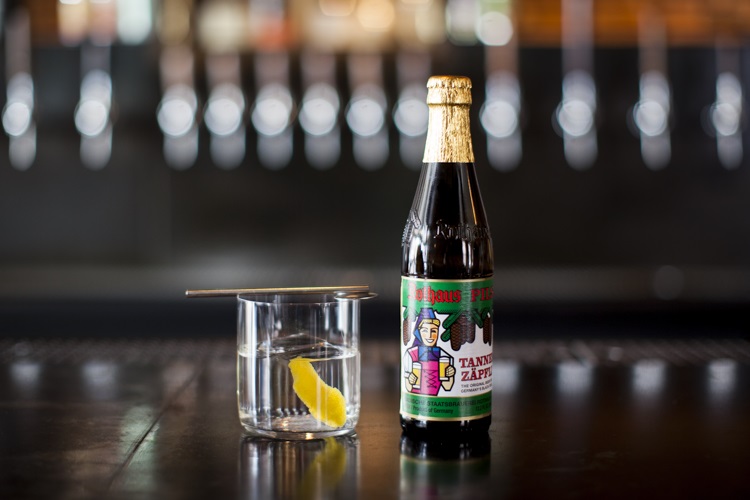
You always get: A Martini
Next time order: A pilsner
The martini label gets plastered a lot of places it doesn’t belong, from sickly sweet schnapps drinks to “cocktails” that are little more than cold vodka. But a proper martini, one made with a London dry gin and a decent helping of dry vermouth, is a study in simplicity, easy to make but just as easy to get wrong. Like the martini, the pilsner is an enduring classic. But as any brewer will tell you, it’s also a damn tough style to perfect. When done correctly, a pilsner offers a dry, crisp drinking experience accented with herbal, floral and peppery notes. It’s like a martini: though we don’t recommend shaking or stirring.
Best Example: Rothaus Pils Tannen Zäpfle
Others to Try: Victory Prima Pils, Sierra Nevada Summerfest Lager, North Coast Scrimshaw Pilsner
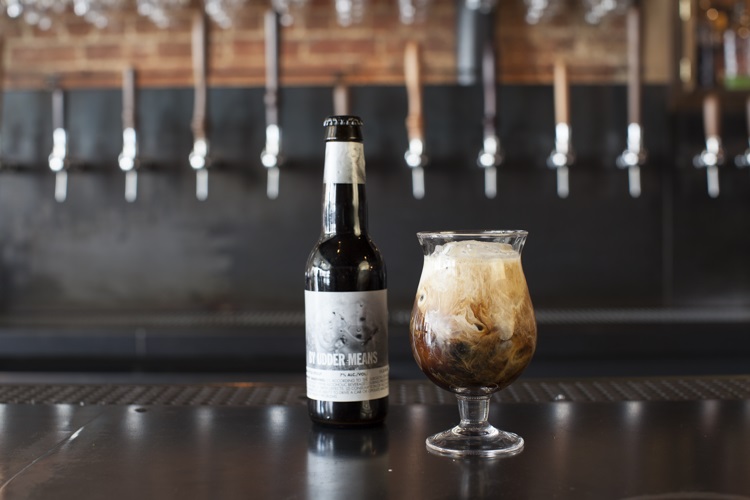
You always get: A White Russian
Next time order: A milk stout
With its creamy sweetness and hints of coffee and vanilla, the White Russian has long been a favorite of brunchers and slacker bowlers. Milk stouts hit all the same lovely notes. Milk stouts make use of lactose, an unfermentable sugar that lends the beer some residual sweetness and a creamy mouthfeel. Coffee, chocolate, and vanilla are common tasting notes in darker beers, and are often enhanced with additional ingredients like cacao nibs and vanilla beans. The result is a decadent dessert beer that even the Dude could get behind.
Best Example: To Øl By Udder Means
Others to Try: Left Hand Milk Stout, Terrapin Moo-Hoo, 3 Floyds Moloko
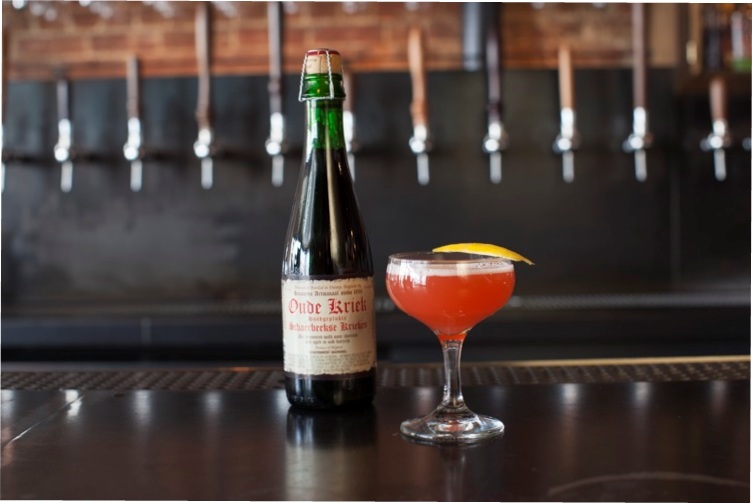
You always get: A cosmopolitan
Next time order: A fruit beer
Thanks to Carrie Bradshaw and the gang, the Cosmopolitan is widely regarded as the quintessential “girly” drink. Undeserved stereotypes aside, a proper Cosmo is actually a delicious and well-balanced drink, (arguably) invented by cocktail legend Dale DeGroff himself. And just like the Cosmo, fruit beers are often dismissed by beverage snobs, tossed aside in favor of double IPAs and barrel-aged stouts. But a well-made fruit beer (a catch-all term for any beer that derives some of its flavor from fruit) is a thing of beauty, like eating berries and apples fresh from the field. They’re the perfect gateway to the wide world of beer.
Best Example: Hanssens Oude Kriek
Others to Try: Abita Purple Haze, Founder’s Rubaeus, New Glarus Serendipity
